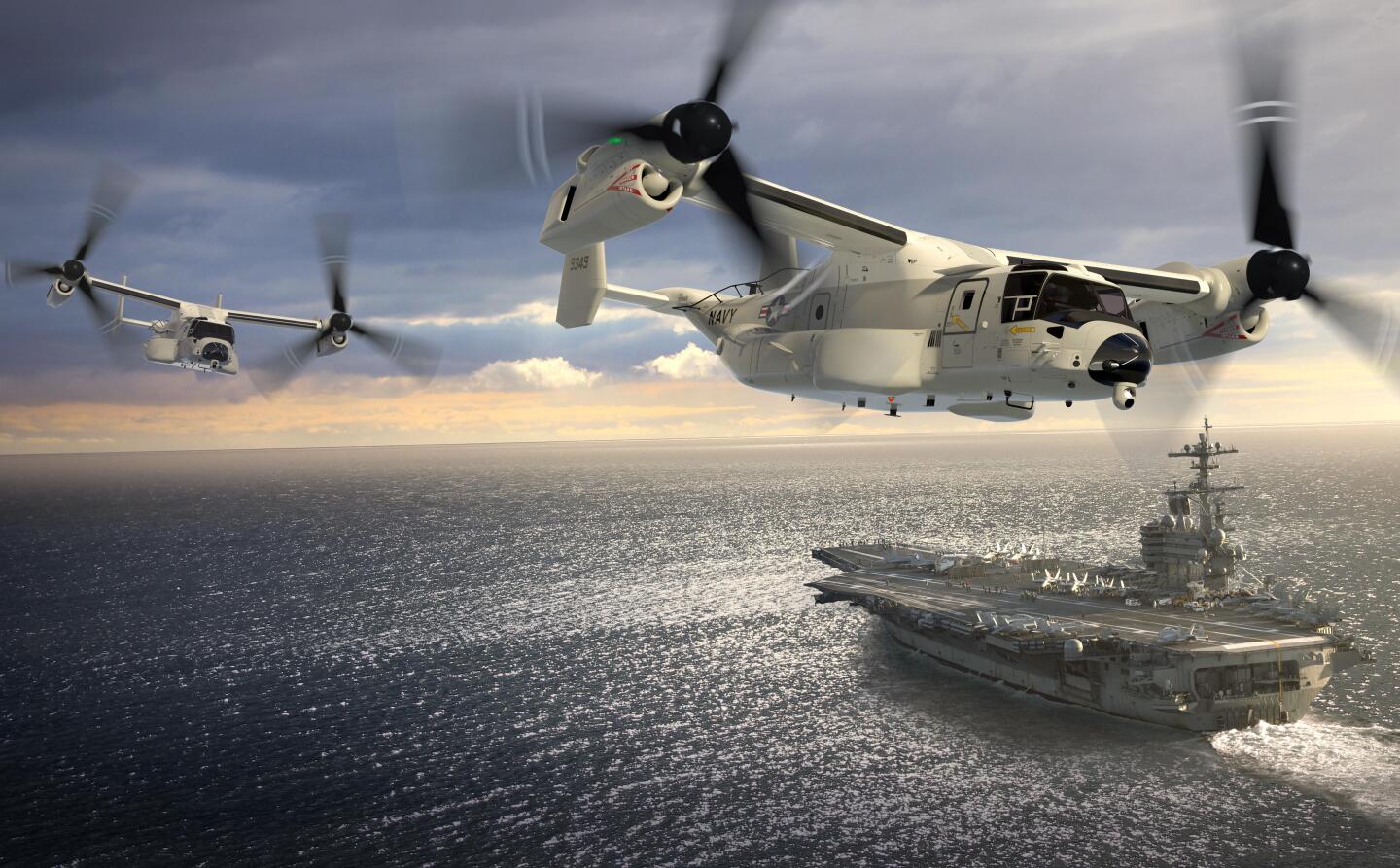The latest variant of the Boeing/Bell Textron Osprey tilt-rotor aircraft recently completed its maiden flight at Bell’s Amarillo Assembly Center in Texas. Designed to replace the US Navy's C-2A Greyhound twin-engine, high-wing, cargo aircraft, the CMV-22B Osprey will be used to transport personnel, mail, supplies, and high-priority cargoes between shore bases and aircraft carriers.
Boasting an improved fuel capacity and extended operational range, the tilt-rotor V/STOL CMV-22B Osprey is based on the MV22B variant and builds on the experiences of constructing and operating the MV-22 and CV-22 variants used by the US Marine Corps and US Air Force. It differs in that it is designed specifically for carrier fleet operations.
Powered by two Rolls-Royce Liberty AE1107C engines, which crank out 6,150 shaft bhp each, the CMV-22B can vertically lift 6,000 lb (2,700 kg) of payload like a helicopter before translating to horizontal flight like a conventional fixed-wing aircraft. With its crew of four and 23 passengers, it has a cruise speed of 269 knots (310 mph, 498 km/h), a ceiling of 25,000 ft (7,620 m), and a maximum range of 1,165 nm (1,342 mi, 2158 km).

The Navy has ordered 44 of the CMV-22B with the first expected to be delivered to the Air Test and Evaluation Squadron (HX) 21 for testing in a few months and will enter service in 2021.
"With the ability to travel up to 1,150 nautical miles, the CMV-22B will be a lifeline for our servicemen and women out at sea," says Kristin Houston, vice president, Boeing Tiltrotor Programs and director, Bell Boeing V-22 Program. "The quality and safety built into this aircraft will revolutionize the way the U.S. Navy fulfills its critical carrier onboard delivery mission."
Source: Boeing






